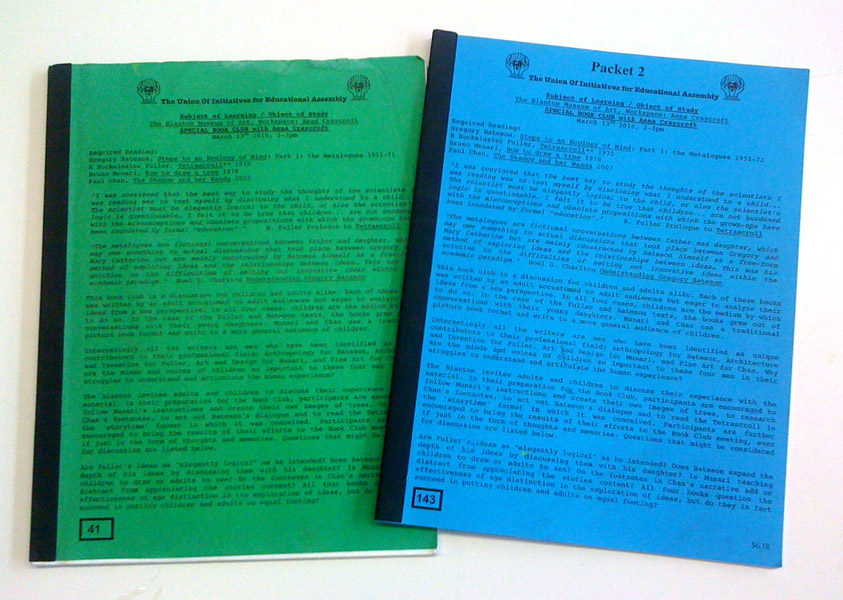Required Readings
Gregory Bateson, Steps to an Ecology of Mind: Part 1: the Metalogues pp.3-58* 1951-71
R Buckminster Fuller, Tetrascroll** 1975
Bruno Munari, How to draw a tree 1978
Paul Chan, The Shadow and her Wanda 2007
“I was convinced that the best way to study the thoughts of the scientists I was reading was to test myself by disclosing what I understood to a child... The scientist must be elegantly logical to the child, or else the scientist’s logic is questionable… I must induce the child to imagine making her own natural objective use of those subjectively discovered principles. I felt it to be true that children had great advantage in this respect as they are not burdened with the misconceptions and obsolete propositions with which the grown-ups have been inundated by formal “education”.” B. Fuller Prologue to Tetrascroll
“The metalogues are fictional conversations between father and daughter, which may owe something to actual discussions that took place between Gregory and Mary Catherine but are mainly constructed by Bateson himself as a free-form method of exploring ideas and the relationships between ideas… Bateson describes a metalogue as “a conversation about some problematic subject”. This was his solution to the difficulties of setting out innovative ideas within the academic paradigm.” Noel G. Charlton Understanding Gregory Bateson: mind, beauty, and the sacred earth
This book club is a discussion for children and adults alike. Each of these books was written by an adult accustomed to adult audiences but eager to analyze their ideas from a new perspective. In all four cases, children are the medium by which to do so. In the case of the Fuller and Bateson texts, the books grew out of conversations with their young daughters but it arguable whether it is in fact children whom the writings address. Munari and Chan use a traditional picture book format and write to a more general audience of children (The cover of Chan’s book is labeled “Strictly for Children”), but perhaps they are really writing to the child in each of us.
Interestingly all the writers are men who have been identified as unique contributors to their professional field: Anthropology for Bateson, Architecture and Invention for Fuller, Art and Design for Munari, and Fine Art for Chan. Why are the minds and voices of children so important to these four men in their struggles to understand and articulate the human experience?
Adults and children are invited to attend this Book Club to discuss their experience with the material. In their preparation for the Book Club, participants are encouraged to follow Munari’s instructions and create their own images of trees, to research Chan’s footnotes, to act out Bateson’s dialogue and to read the Tetrascroll in the ‘storytime’ format in which it was conceived. Participants are further encouraged to bring the results of their efforts to the Book Club meeting, even if just in the form of thoughts and memories. Questions that might be considered for discussion might be among those listed below.
Are Fuller’s ideas as “elegantly logical” as he intended? Does Bateson expand the depth of his ideas by discussing them with his daughter? Is Munari teaching children to draw or adults to see? Do the footnotes in Chan’s narrative add or distract from appreciating the stories content? All four books question the effectiveness of age distinction in the exploration of ideas, but do they succeed in putting children and adults on equal footing?
